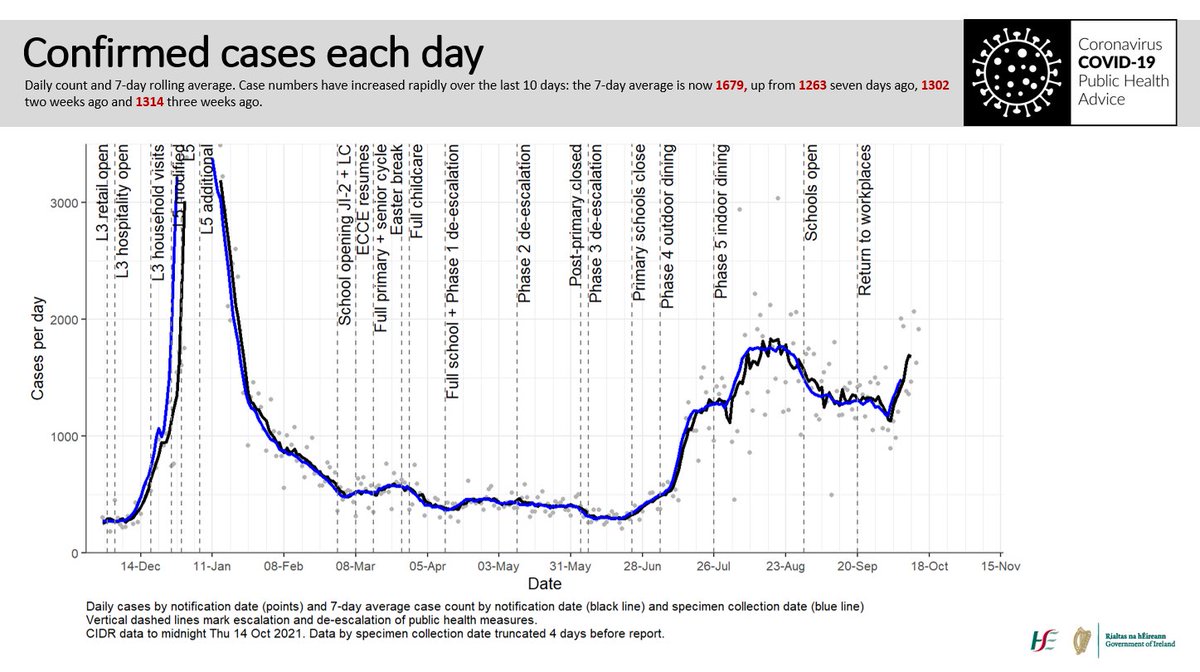A useful article. The conclusions are broadly correct, but the calculations are right only if we were randomly screening large asymptomatic populations. We mostly test people with symptoms and close contacts of known cases, so the proportion of false positives is much lower 1/10
https://twitter.com/IrishTimesOpEd/status/1309908260368125953
If you have symptoms, or are a close contact, the prior probability of having SARS-CoV-2 infection is much higher than the population prevalence. A close contact has about a 1 in 10 chance of being infected. 2/10
Specificity and sensitivity of a test are harder to measure than you might think. The specificity (probability of test being negative where there is no virus) used in the article is probably generous. If the specificity is 99.7%, 3 in every 1000 tests is a false positive. 3/10
If you test 1000 close contacts twice, seven days apart, you’ll detect about 100 cases, and only 6 false positives, so 100 of your 106 positives (94%) are true positives. If the specificity is better, there’ll be even fewer false positives. 4/10
What is more important is missed cases and false negatives. The sensitivity (probability of the test being positive if the virus is present) given in the article is higher than we are seeing in practice: sensitivity in the field varies from 70 to 90%. 5/10
The test can fail to detect cases for two reasons. First, at any given time about 30% of infected people are in the latent period, the 3-5 days after they have been infected, where the virus is multiplying inside their cells and is not yet detectable. 6/10
Second, even they start to shed the virus, a sensitivity of 70-90% means the test will fail to detect the virus in somewhere between 10% and 30% of cases. A ‘not detected’ test does not prove you do not have the virus; it does not show you are ‘COVID-free’. 7/10
This is why close contacts of a confirmed case are tested twice, and why we must restrict our movements even if the first test is negative. 8/10
If you have symptoms strongly suggestive of COVID-19 and your tests shows ‘not detected’, or your doctor has other reasons to suspect you may really have SARS-CoV-2, they will repeat the test; it is vital that testing has proper clinical oversight and interpretation. 9/10
Again, a note of thanks to those medical scientists who do the testing, and the clinicians and specialists who work with them to properly interpret the results. 10/10
• • •
Missing some Tweet in this thread? You can try to
force a refresh





















